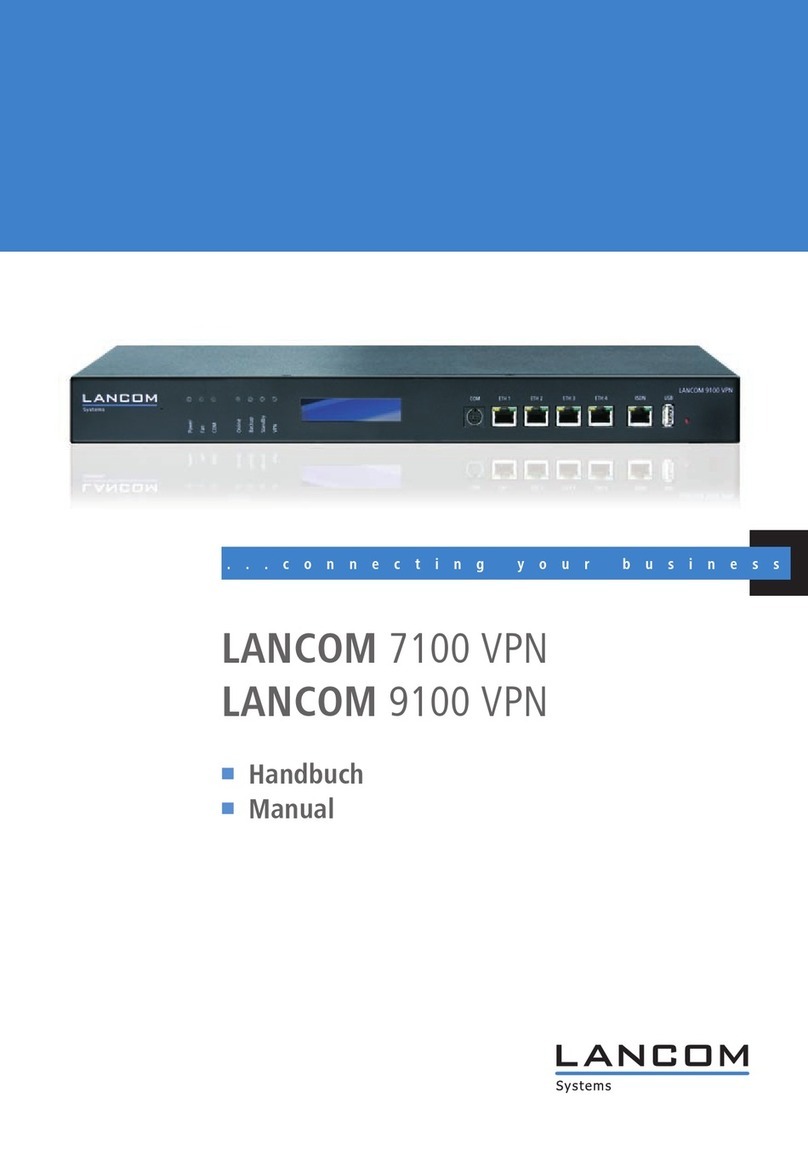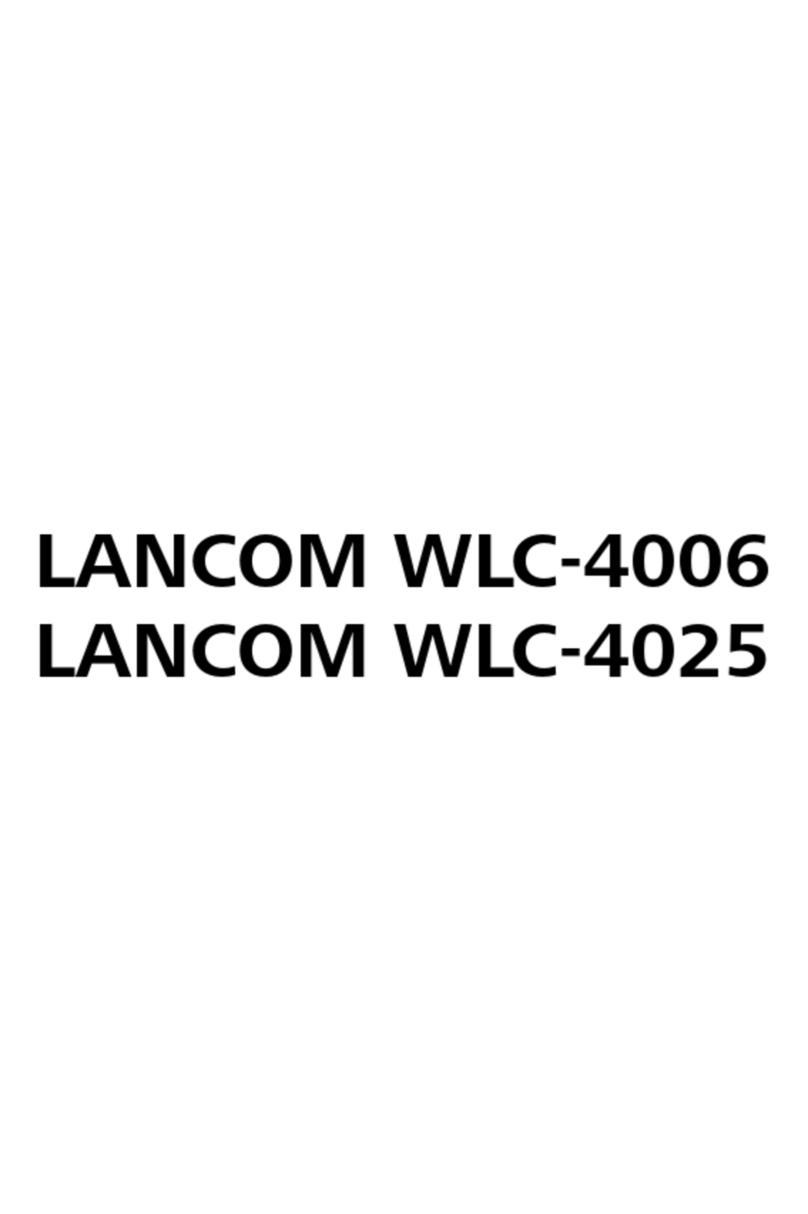
LANCOM WLC series
Preface
3
EN
Preface
Thank you for your confidence in us!
The WLAN Controllers LANCOM WLC-4006, LANCOM WLC-4025+ and
LANCOM WLC-4100 are state-of-the-art hardware components for medium-
and large-scale WLAN-installation management that is just as simple as it is
secure. All settings are entered just once into a central profile in the WLAN
Controller—the rest is pure and simple "Plug&Play". New Access Points are
found automatically. All of the configuration settings required for optimized
wireless network operations, such as the channel settings and security poli-
cies, are automatically transferred to all of the Access Points. Operations are
also monitored centrally (e.g. background scanning) by the WLAN Controller.
Greatly simplified WLAN management offers significant costs savings. WLAN
networks are extended easily and securely simply by "plugging in" new access
points. Even remote sites can be seamlessly integrated—any IP connection
will do. Smaller sites also benefit from the RADIUS/EAP server integrated into
the LANCOM WLAN Controller.
At the same time the LANCOM WLAN Controllers ensure maximum security as
all of the LANCOM Access Points in the network strictly observe corporate
security policies automatically. Potential security loopholes are eliminated by
permanent monitoring across all company sites.
Special highlights of the LANCOM WLAN Controller include, among others:
""Smart controller" for application-related or user-related WLAN net-
working
Reliability due to self-sufficient operations
No separate cabling necessary—any IP connection will do
"Split management" for LANCOM WLAN Routers
Automatic discovery and commissioning of access points and WLAN rout-
ers
Central administration of WLAN configuration profiles
Monitoring and assurance of encryption and QoS policy
Integrated RF optimization
Full support of VLAN, RADIUS and 802.x/EAP functions
Integrated router, firewall and VPN gateway
Scalable by adding Controllers; redundancy included





























